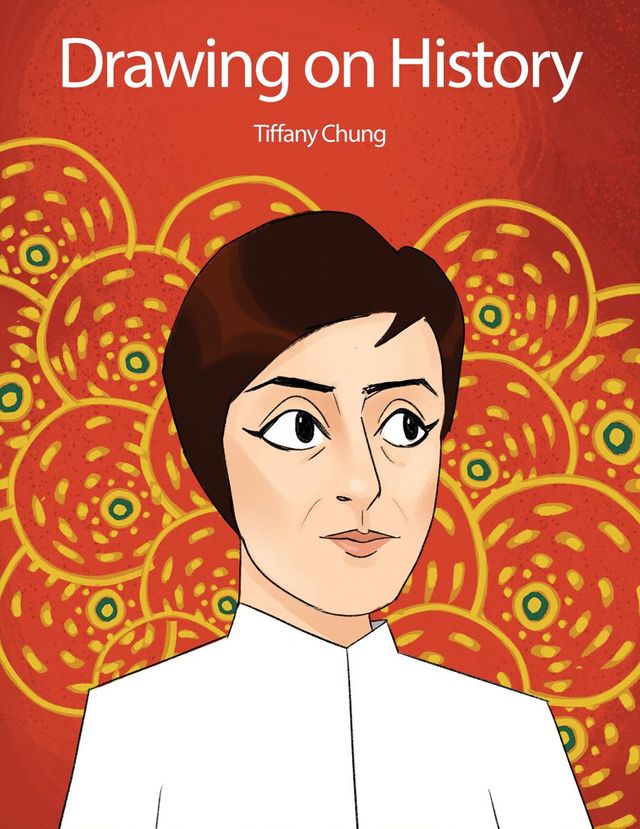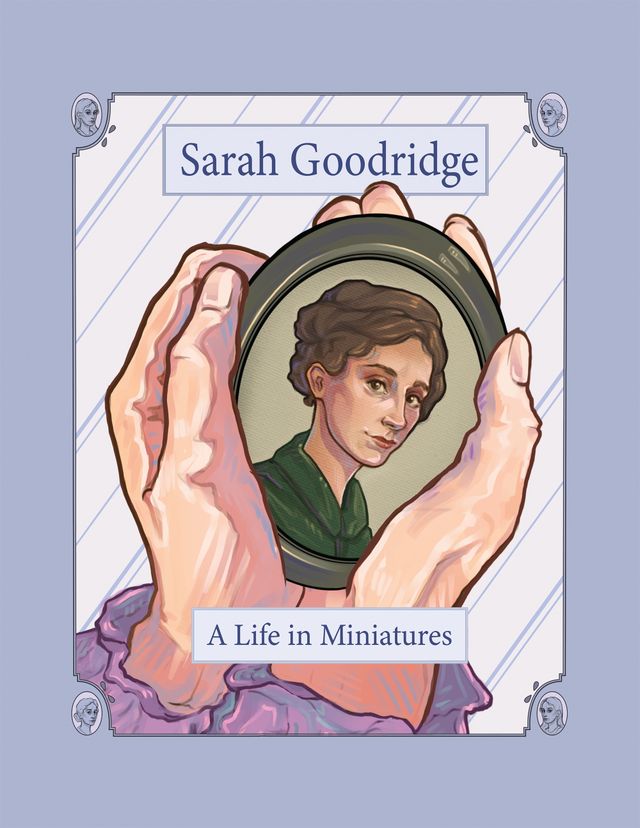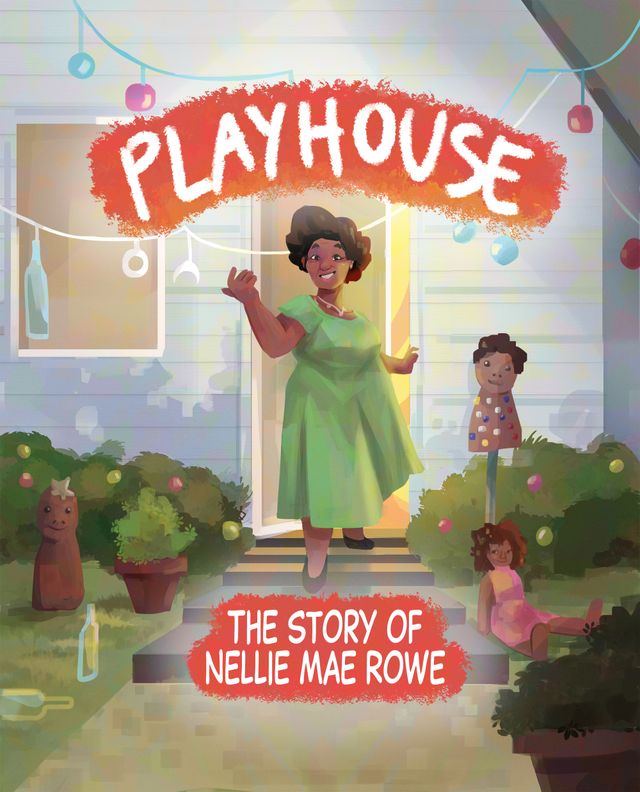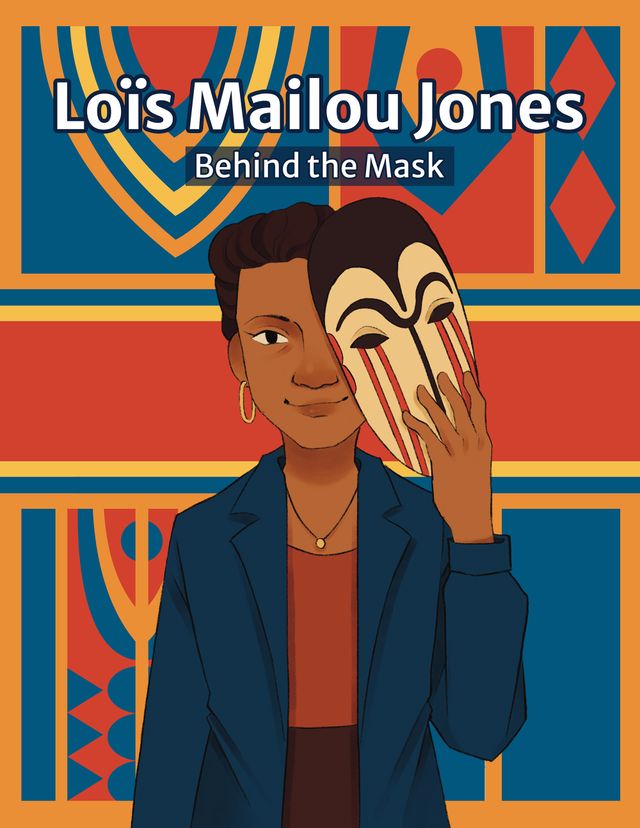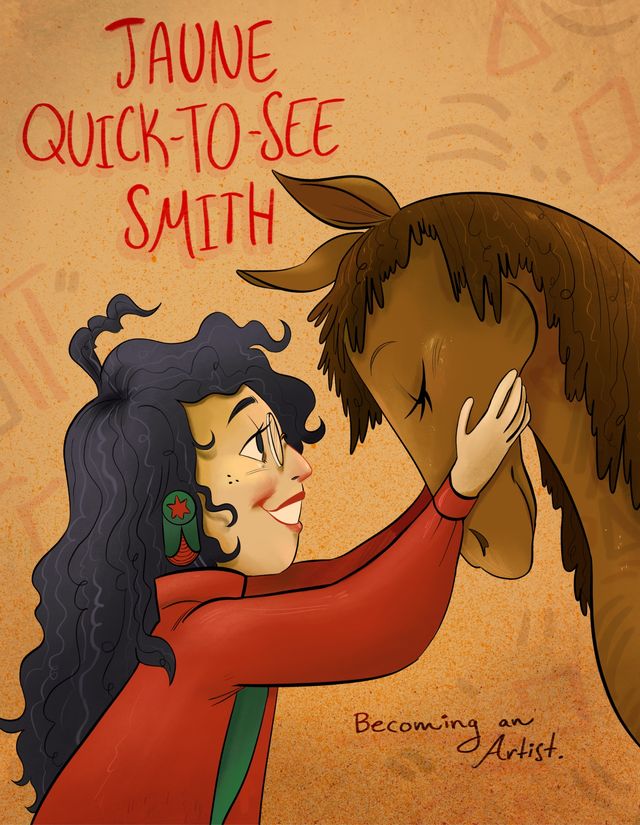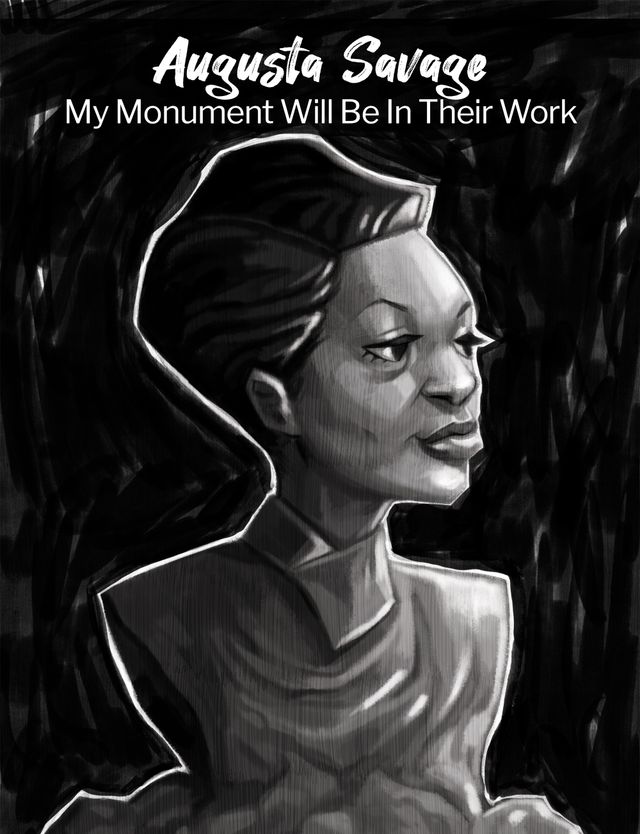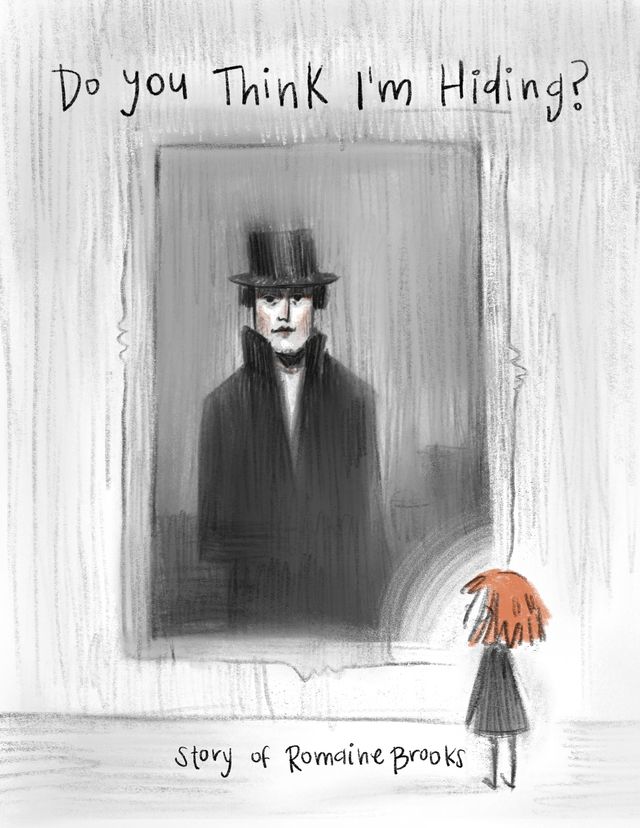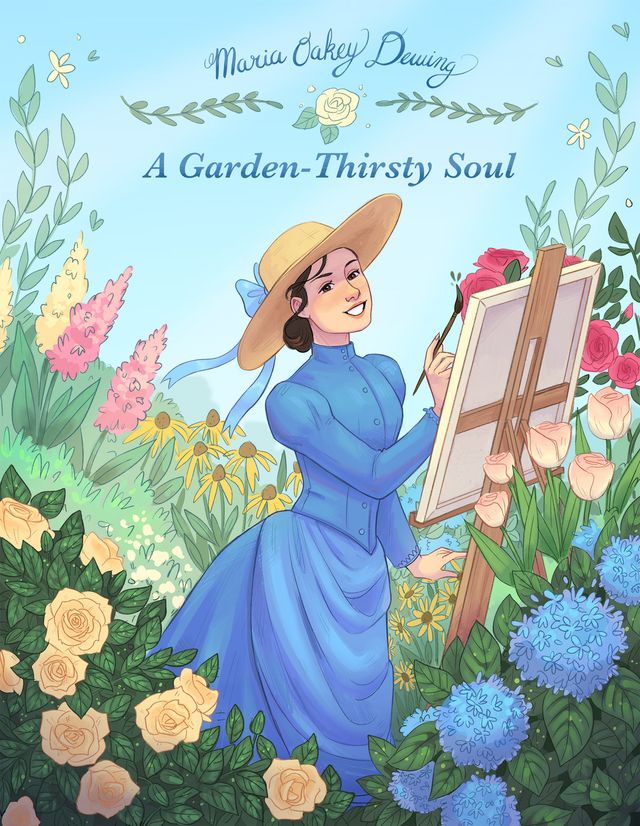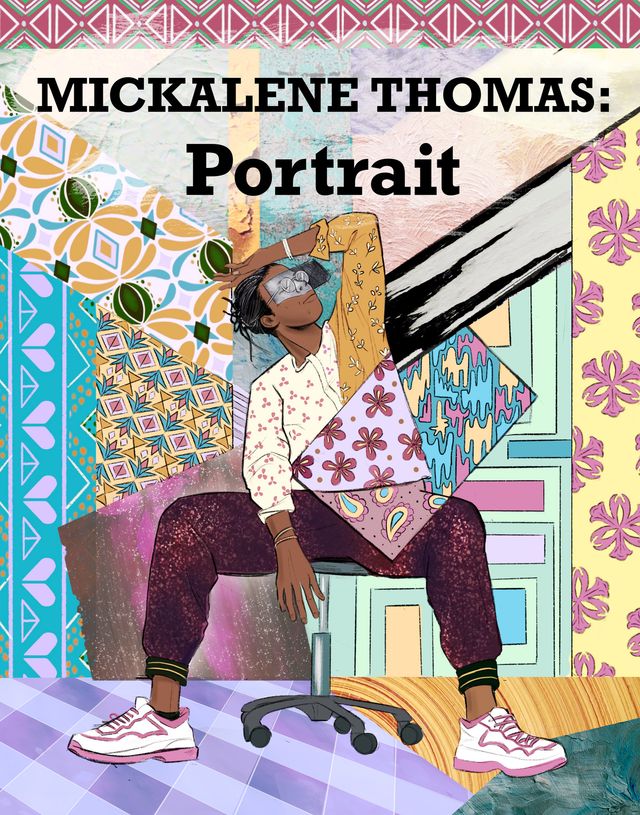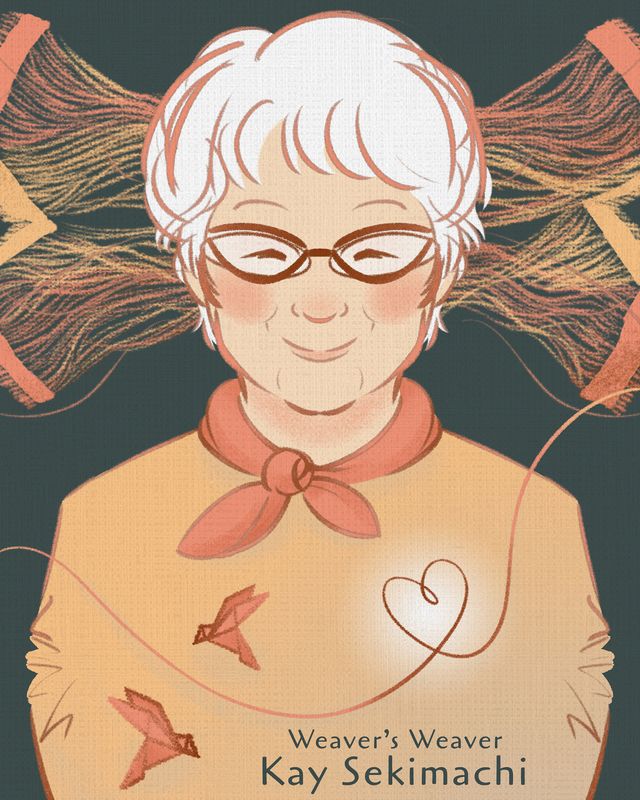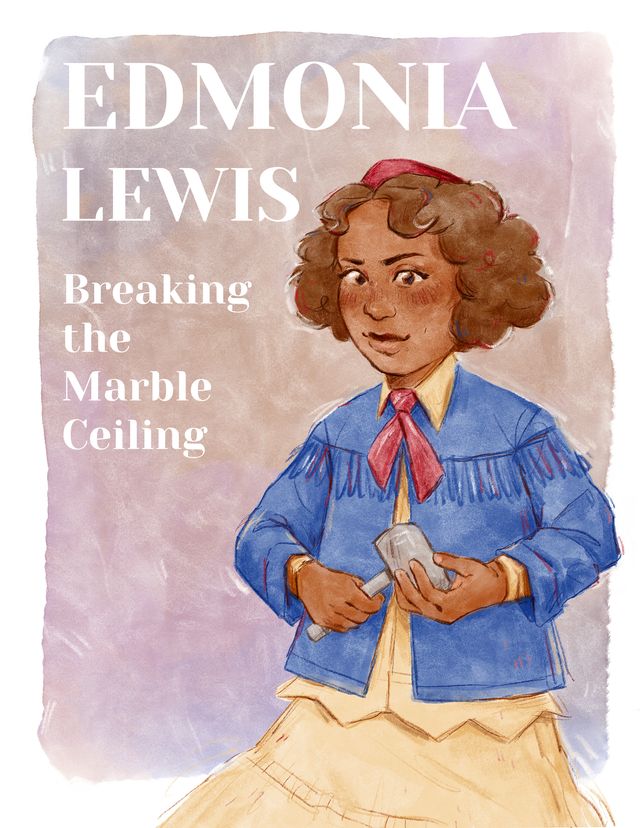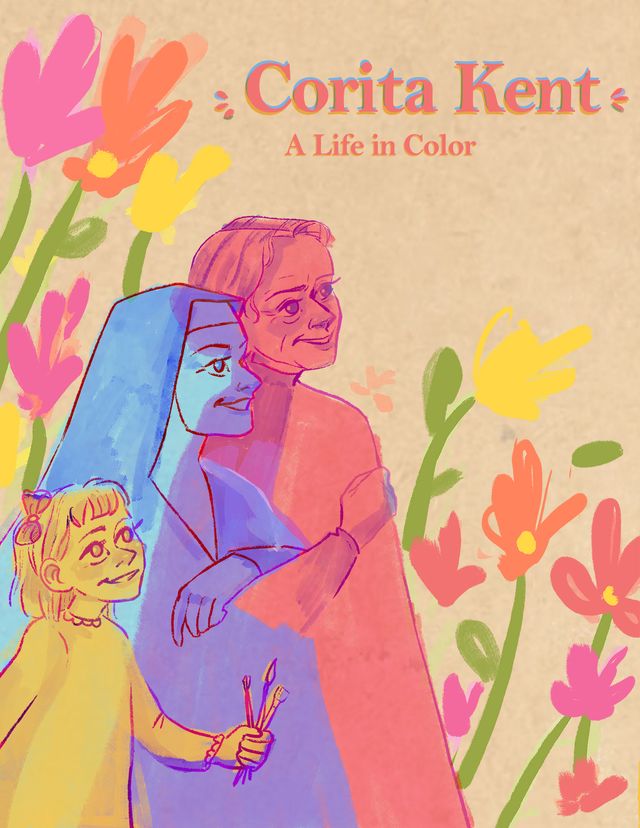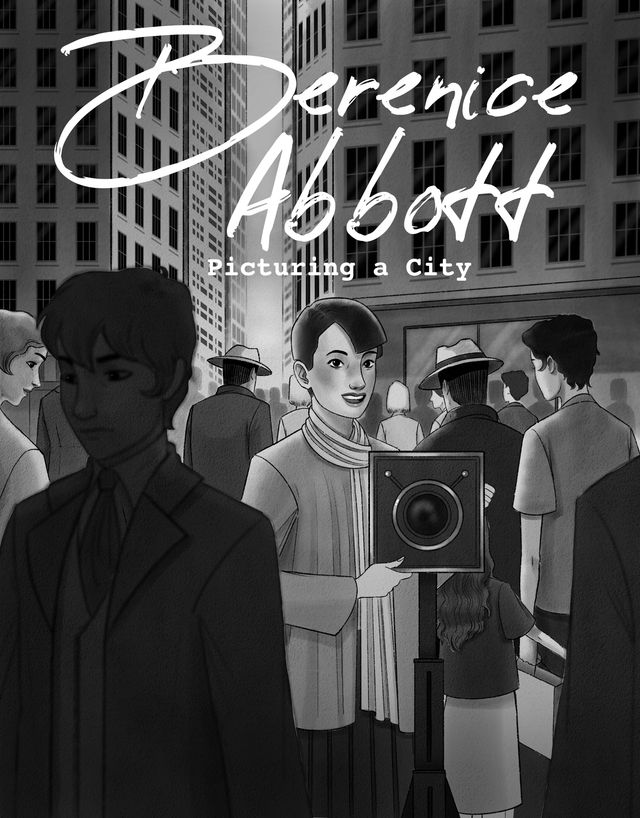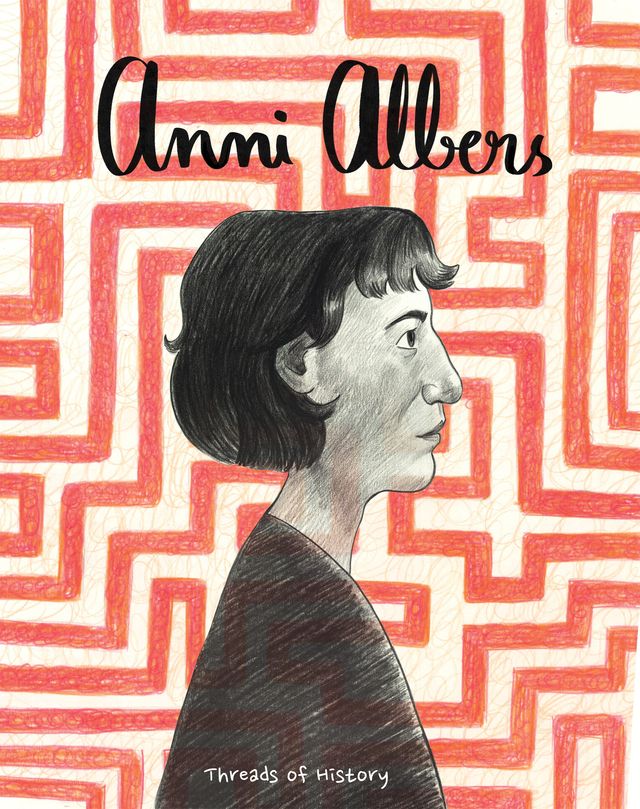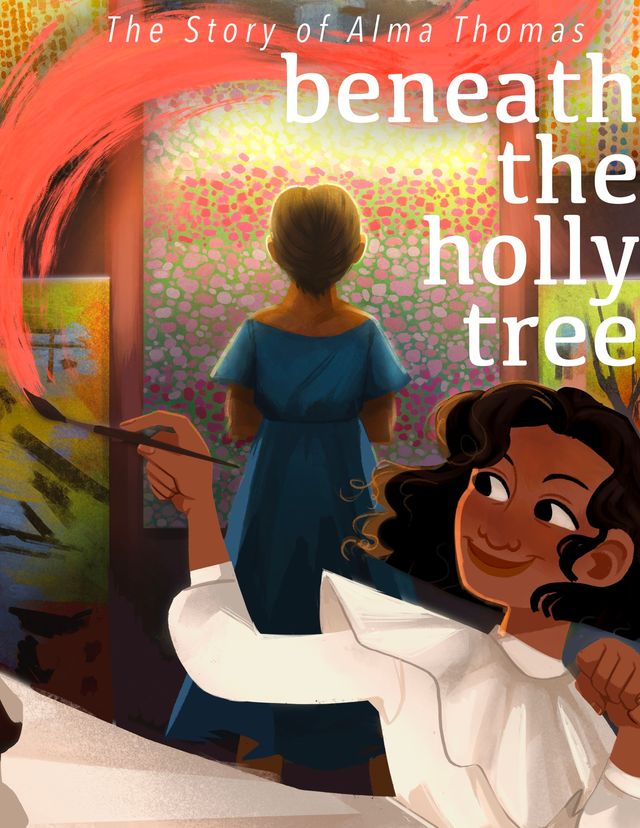An Overview
Sonya Clark grew fond of handmade crafts stitching with her grandmother as a child and loved to bring stories into her art. One of her monumental works, inspired by the dishtowel used by the Confederate army to surrender, elicits thought about reparations, abolition, and freedoms for Black people.
This comic is part of a series Drawn to Art: Tales of Inspiring Women Artists that illuminates the stories of women artists in the collection of the Smithsonian American Art Museum. Inspired by graphic novels, these short takes on artists’ lives were each drawn by a student-illustrator from the Ringling College of Art and Design.
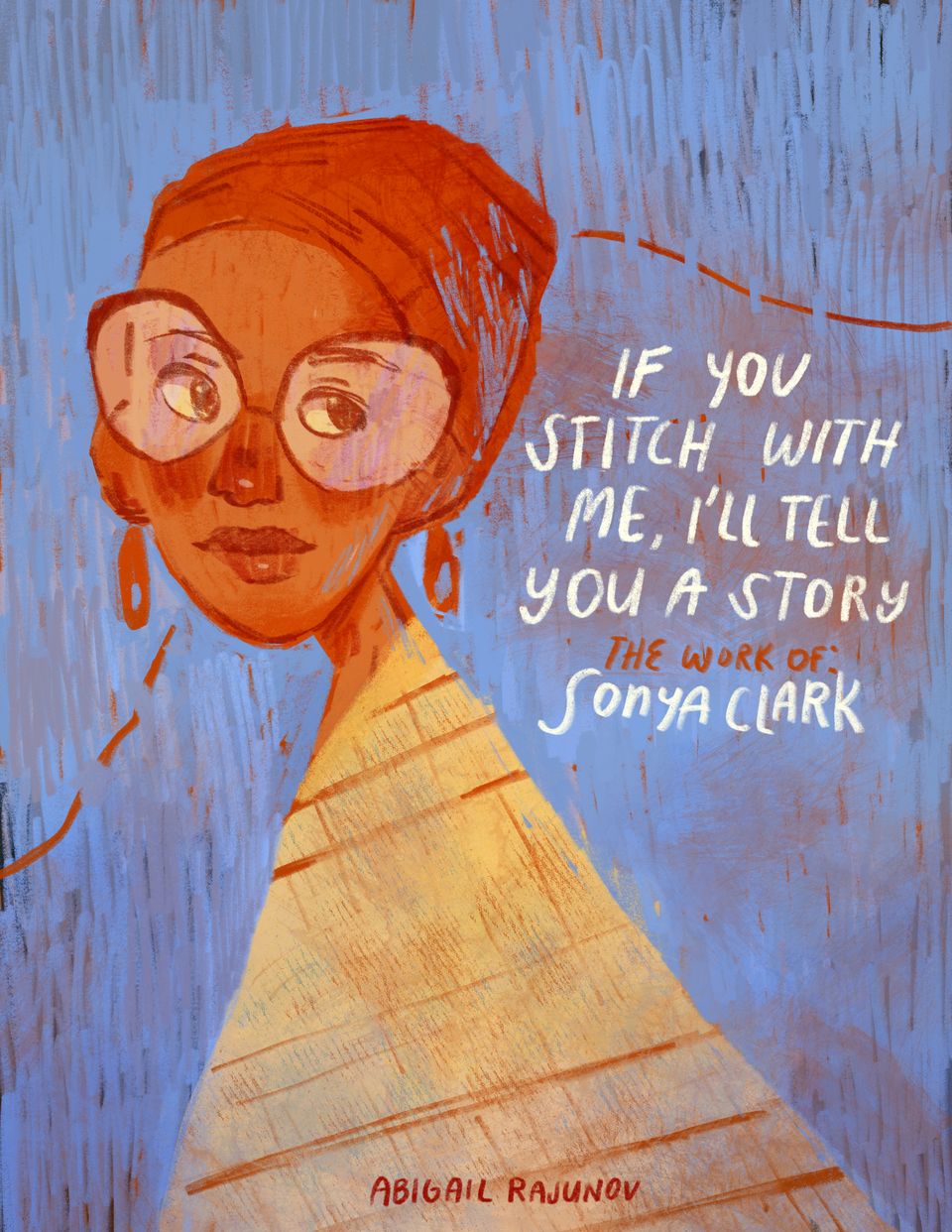
Sonya is pictured in a three-quarter front view, gazing toward the text to her right that reads: “If You Stitch With Me, I’ll Tell You a Story, The Work of Sonya Clark.” Her skin tone is a warm brown, complemented by her red headwrap and dangling earrings. Sonya’s eyes are behind her iconic large round glasses. Draped around her body is a fabric reminiscent of the Confederate Truce Flag: it is a warm cream color with red stitched lines across the horizontal. The background is etched with a light cerulean blue, leaving a colored-pencil-like texture. A red thread flows up and behind Sonya’s head, weaving in and out of the background. Towards the bottom of the image, the illustrator’s name is written in dark red: “Abigail Rajunov.”
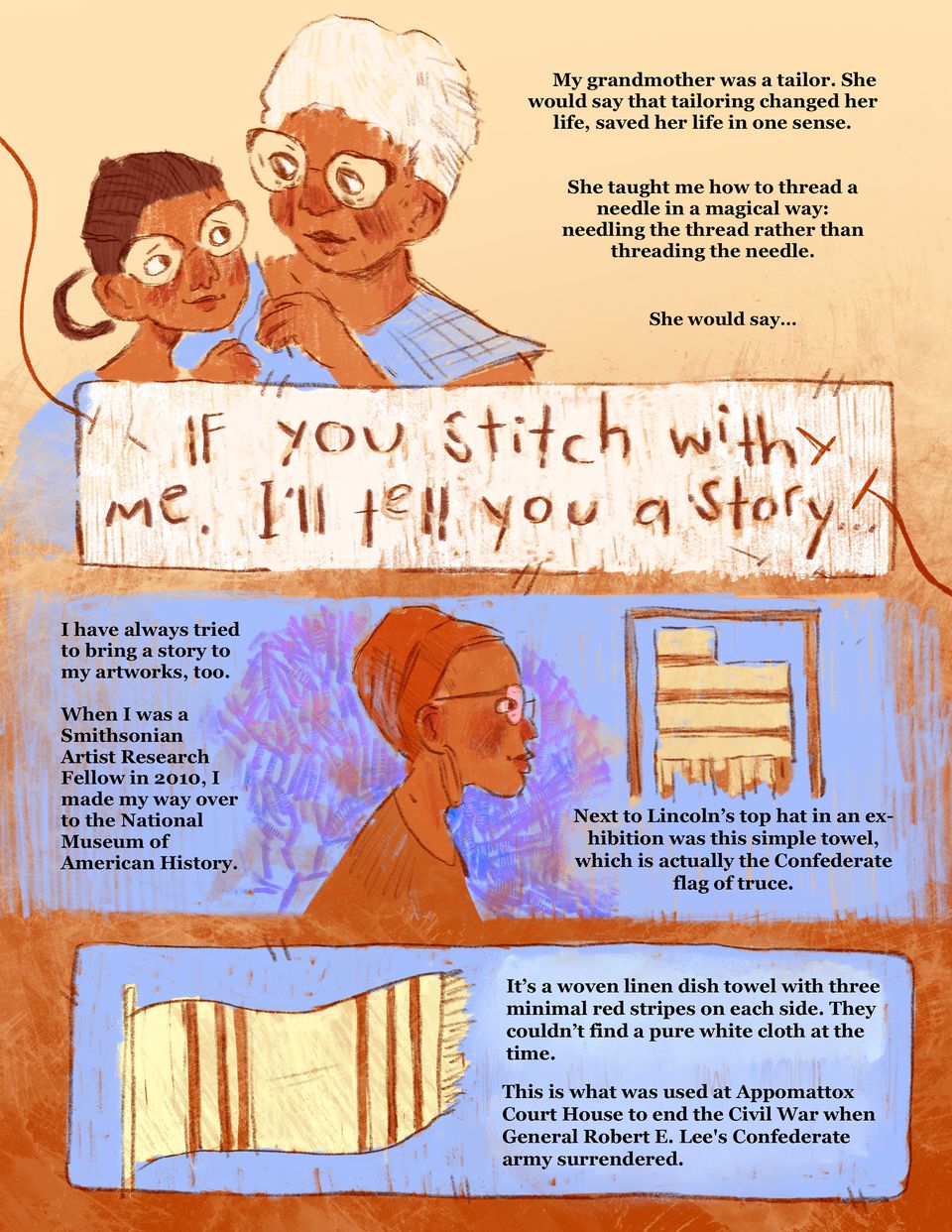
The illustrations are placed on a textured background that gradients from a medium, warm cream color to a dark, saturated red. In the top left corner, a young Sonya is sitting with her grandmother, who has a white afro and wears a blue, short-sleeved camisole. She is holding a needle and thread, demonstrating how to thread a needle to her granddaughter. Sonya has her dark hair braided and tied back with round ponytails. Both Sonya and her grandmother wear large, round glasses. To the right of the image the text reads:
"My grandmother was a tailor. She would say that tailoring changed her life, saved her life in one sense. She taught me how to thread a needle in a magical way: needling the thread rather than threading the needle.She would say ... "
Below, there is a large piece of white fabric with dark red letters hand-embroidered onto it. The letters read: “If you stitch with me, I’ll tell you a story…”
Behind the piece of fabric, the red thread can be seen weaving in and out, flowing around the images on the page.
Further down, there is a long, cerulean blue panel that spans across the width of the page. Sonya is pictured in the middle of the panel, this time as an adult. She is drawn from the side, looking to the right, with her same iconic glasses and dark red headwrap from the cover image. She is also wearing a dark red blouse. Behind her is a purple design reminiscent of the comb sculptural pieces she creates. To her left the text reads:
"I have always tried to bring a story to my artworks, too. When I was a Smithsonian Artist Research Fellow in 2010, I made my way over to the National Museum of American History. "
To her right, she gazes at the framed display of the Confederate Truce Flag, a cut-up, cream-colored towel with a fringed end and three red stripes stitched in the horizontal. Under the image, there is text that reads:
"Next to Lincoln's top hat in an exhibition was this simple towel, which is actually the Confederate Truce Flag."
In the final panel on the bottom of the page, the Confederate Truce Flag is illustrated waving in front of a cerulean blue sky. It looks more lifelike, colored with a bright, warm cream color with bold red stripes weaved in on each side. To its right, there is text that describes the flag:
"It's a linen woven dish towel with three minimal red stripes on each side. They couldn't find a pure white cloth at the time. This is what was used at Appomattox to end the Civil War when Lee's Confederate army surrendered."
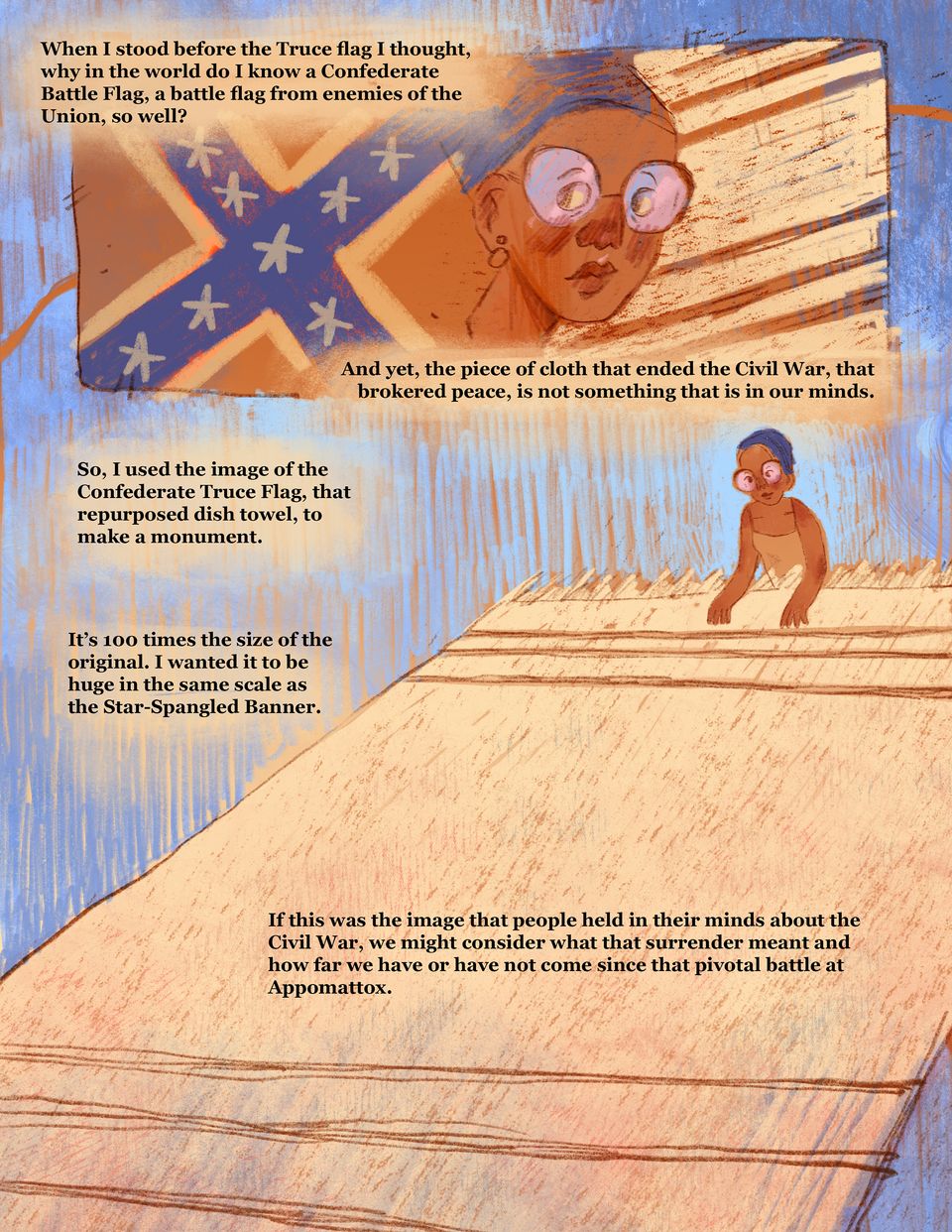
A similar cerulean blue is sketched throughout the background of the page. The first panel shows Sonya in a dark blue headwrap, facing in a three-quarter view to the right. To the left of her, the Confederate flag is painted, with text above it that reads:
"When I stood before the Truce flag I thought, why in the world do I know a Confederate Battle Flag, a battle flag from enemies of the Union, so well? "
To the right, the Confederate Truce Flag is painted, with text below it that reads:
"And yet, the piece of cloth that ended the Civil War, that brokered peace, is not something that is in our minds. "
Below that panel is an image of Sonya standing over her monumental recreation of the Confederate Truce Flag, flooding the rest of the page. It is textured with hints of blue and red and illustrated with its iconic red horizontal stripes on each end. Sonya looks pleased as she admires her work. To the left of the flag, there is text that reads:
"So, I used the image of the Confederate Truce Flag, that repurposed dish towel, to make a monument. It’s a hundred times the size of the original. I wanted it to be huge in the same scale as the Star-Spangled Banner."
Sonya then goes on to explain:
"If this was the image that people held in their minds about the Civil War, we might consider what the surrender meant and how far we have or have not come since that pivotal battle at Appomattox."
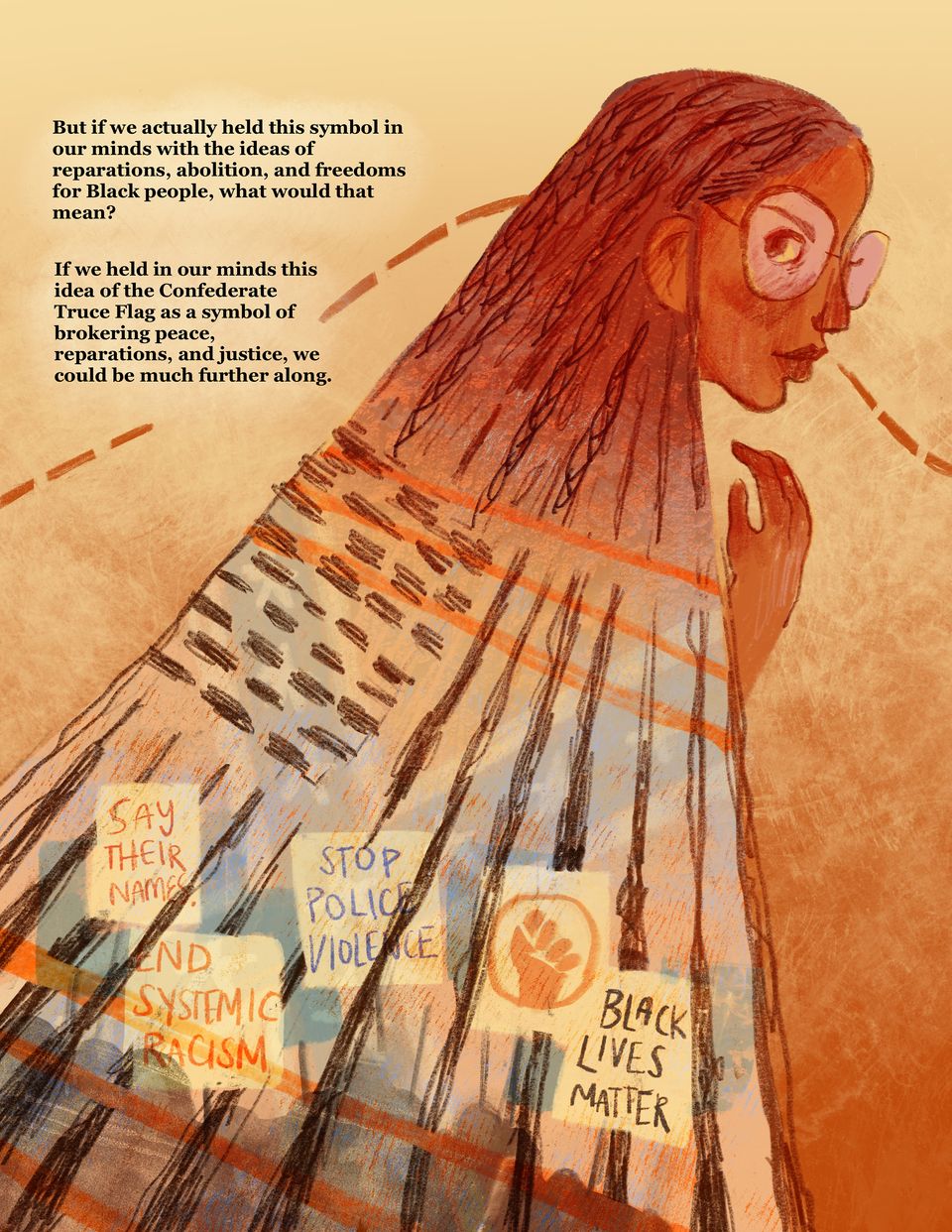
Sonya is seen with her back turned towards us, with her hair flowing down. Interwoven with her hair is a thin veil of the Confederate Flag overlayed on top of the Confederate Truce Flag. Her hair weaves in and out of the flag to resemble the American Flag. At the bottom of the image, protest signs can be seen incorporated into her hair as well, reading “Say Their Names,” “Stop Police Violence,” “End Systemic Racism,” and “Black Lives Matter.”
The illustration uses a warm color palette, with orange and red tones painted throughout. Behind Sonya is a red thread that continues throughout the comic, here weaving its way behind her head. Sonya looks determined and powerful in her stance, encapsulating the power she holds by reclaiming a symbol that was used to discriminate against her for so long.
To the left of Sonya, there is text that reads:
"But if we actually held this symbol in our minds with the ideas of reparations, abolition, and freedoms for Black people, what would that mean? If we held in our minds this idea of the Confederate Truce Flag as a symbol of brokering peace, reparations, and justice, we could be much further along."
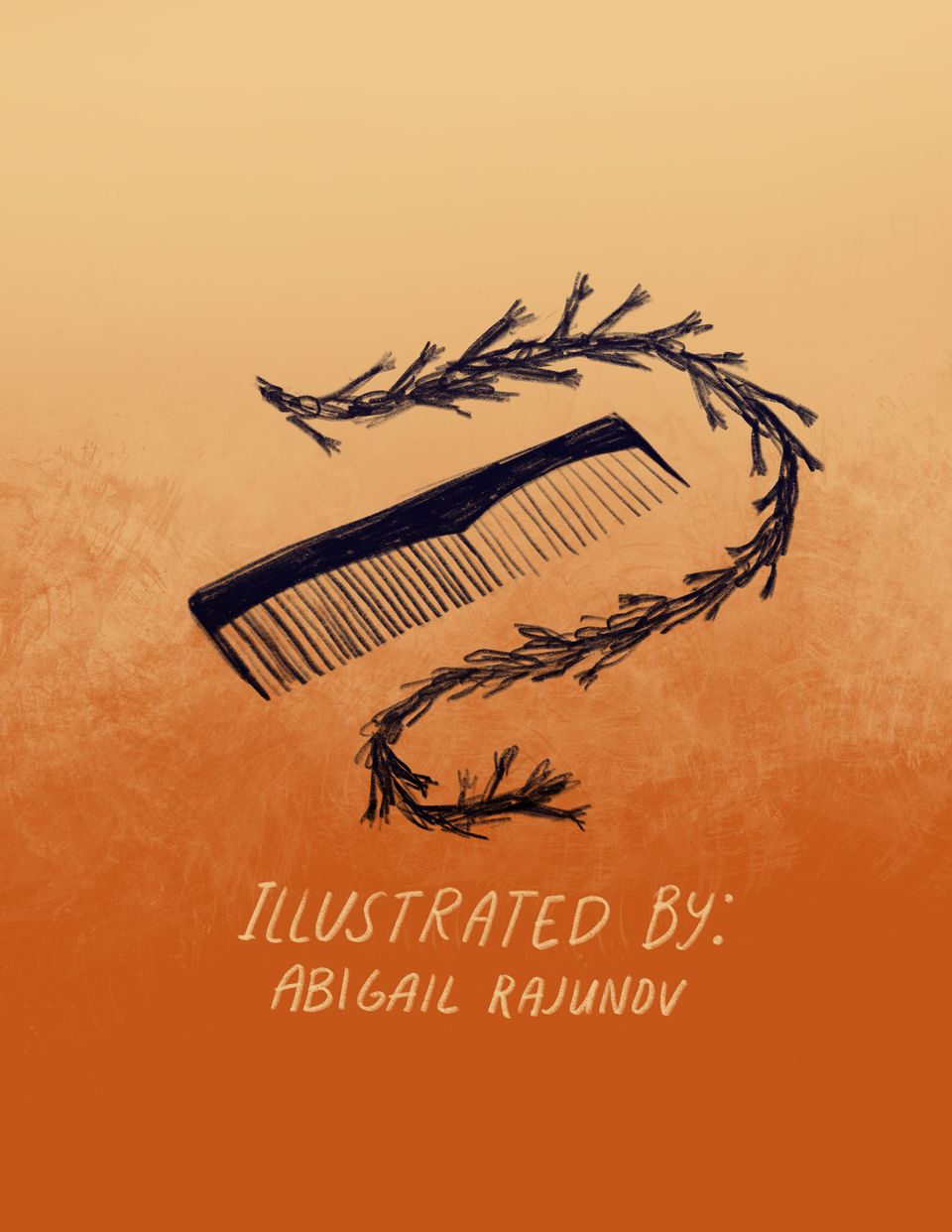
On a page that gradients from cream to burnt orange, there is a simple spot illustration of a strand of woven hair surrounding a simple comb. Under the spot illustration, there is handwritten text that reads:
Illustrated by: Abigail Rajunov














